

All presentations will be live-streamed on Zoom. All talks during general meetings will take place at our regular location, the Kalamazoo Area Mathematics & Science Center (KAMSC). This will give you a chance to purchase Eclipse Shades and help the KAS! Recordings of all talks and workshops will also be posted on our YouTube channel. However, there will be at least a one month delay in their release, so please join us live from home or at KAMSC!
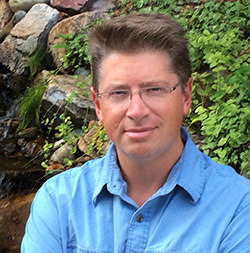
November 3rd @ 7:00 pm ET
Watch it on YouTube
About the Speaker:
Watch it on YouTube
Sun Moon Earth: Solar Eclipses from Omens to Awe
Dr. Tyler NordgrenEclipses of Sun and Moon have been the subject of omens and awe throughout human history. We've told stories of why they happen and when they occur that over time have allowed us to predict them with amazing accuracy. The moments of brief beauty that are a hallmark of total solar eclipses have allowed us to measure our world, and understand the nature of others. In this tradition we continue to study and be amazed by their occurrence and this year the Great North American Eclipse will be no different.
About the Speaker:
Dr. Nordgren is a professional astronomer and artist. He earned a Ph.D. in astronomy from Cornell University and a B.A. in physics from Reed College. He is a former professor of physics and astronomy at the University of Redlands in California and has worked as an astronomer at both the U.S. Naval Observatory and Lowell Observatory. For over a decade, he has worked with the National Park Service to turn the national parks into the single largest source for public science and astronomy education in the world. Dr. Nordgren is the author of Sun Moon Earth: The History of Solar Eclipses from Omens of Doom to Einstein and Exoplanets.
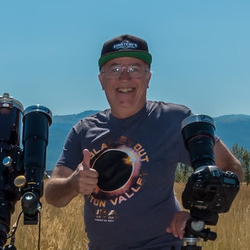
November 17th @ 8:00 pm ET
Watch it on YouTube
About the Speaker:
Watch it on YouTube
Part One: How to Photograph the Eclipse
Alan DyerAlan reviews several ways to capture memorable and dramatic images and videos of the April 8, 2024 total eclipse of the Sun, from simple methods requiring a minimum of attention to more complex techniques requiring more work at the camera. The emphasis will be on techniques that yield great images while still allowing you time to actually see the eclipse!
About the Speaker:
Alan is co-author of the popular guidebook for amateur astronomers, The Backyard Astronomer’s Guide, published by Firefly Books. He has also prepared a new ebook, How to Photograph the Solar Eclipses. Information about both books is at his website, AmazingSky.com. He is a member of the international The World at Night photography group. Alan lives in southern Alberta, Canada, at latitude 51° N. Asteroid 78434 is named for him.
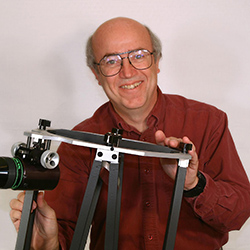
December 15th @ 8:00 pm ET
Watch it on YouTube
About the Speaker:
Watch it on YouTube
Part Two: How to Process Eclipse Images
Alan DyerAlan demonstrates the techniques for getting the most detail from your eclipse images, from simple wide-angle scenes of the eclipsed Sun over a landscape, to complex close-ups requiring the blending of different exposures. He’ll also illustrate ways to process and assemble time-lapse sequences.
About the Speaker:
Alan is co-author of the popular guidebook for amateur astronomers, The Backyard Astronomer’s Guide, published by Firefly Books. He has also prepared a new ebook, How to Photograph the Solar Eclipses. Information about both books is at his website, AmazingSky.com. He is a member of the international The World at Night photography group. Alan lives in southern Alberta, Canada, at latitude 51° N. Asteroid 78434 is named for him.
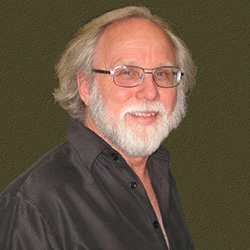
January 12th @ 7:00 pm ET
Watch it on YouTube
Few events in the lexicon of Nature have the intensity and beauty of a total solar eclipse. Over the course of a few magical minutes, the solar glare is
blocked to reveal a facet of the Sun’s personality that can only be appreciated by those along the dark path of the shadow. In those fleeting seconds, time seems to race ahead, and
before the mind fully grasps the spectacle, it is suddenly over and gone, perhaps until the next eclipse.
About the Speaker:
Watch it on YouTube
Moonshadow Madness and Eclipse Journeys
Jay AndersonFew events in the lexicon of Nature have the intensity and beauty of a total solar eclipse. Over the course of a few magical minutes, the solar glare is
blocked to reveal a facet of the Sun’s personality that can only be appreciated by those along the dark path of the shadow. In those fleeting seconds, time seems to race ahead, and
before the mind fully grasps the spectacle, it is suddenly over and gone, perhaps until the next eclipse.
Eclipses take the observer across the globe, seeking out both popular and obscure places to stand under that shadow, making every expedition an adventure that goes beyond astronomy.
This presentation will share the many treats of an eclipse passion: the oncoming shadow, the changes in lighting, the solar corona and chromosphere, sun-bright beads in lunar
valleys, blood-red prominences, and ephemeral shadow bands, but also the journey to strange and beautiful places.
About the Speaker:
Jay Anderson is a Canadian meteorologist and avid eclipse chaser who, for over forty years, has published studies of the climate along eclipse tracks to help those who want to place themselves in the most favorable place under the lunar shadow. These studies were originally incorporated into the circulars of the US Naval Observatory, and then, with co-author Fred Espenak, by NASA. Jay has a BSc in Physics and Astronomy from the University of British Columbia, and a Master’s Degree from the University of Manitoba. With Fred Espenak, he is co-author of Eclipse Bulletin: Total Solar Eclipse of 2024. He also created Eclipsophile, a website that provides climatology and weather information for celestial events. Since his first eclipse in 1979, Jay has traveled the world with his wife Judy to stand under the shadow of the Moon; the eclipse on April 8th will be his 34th.
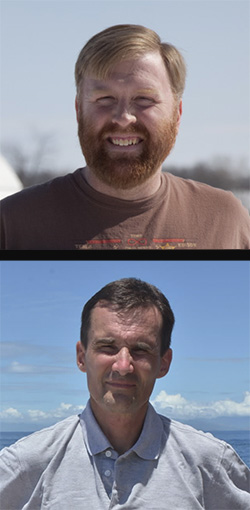
January 19th @ 8:00 pm ET
Watch it on YouTube
When it comes to photographing your first total solar eclipse, veteran eclipse chasers all say the same thing: DON’T! Trying to keep the
Sun centered and getting the right exposures could make you sacrifice the precious minutes of totality. That was good advice 25 years ago, but today a laptop
computer connected to a DSLR or DSLM camera can do all the work for you.
About the Speakers:
Watch it on YouTube
Automated Imaging of the 2024 Eclipse
Fred Bruenjes & Xavier JubierWhen it comes to photographing your first total solar eclipse, veteran eclipse chasers all say the same thing: DON’T! Trying to keep the
Sun centered and getting the right exposures could make you sacrifice the precious minutes of totality. That was good advice 25 years ago, but today a laptop
computer connected to a DSLR or DSLM camera can do all the work for you.
Two popular eclipse automation programs exist that free you to view totality and not your camera! Fred Bruenjes, creator of "Eclipse Orchestrator" for the PC, and
Xavier Jubier, author of "Solar Eclipse Maestro" for Mac-based systems, will demonstrate how to use their software to preprogram all exposure information so that
you can enjoy the eclipse visually. You can have your cake and eat it too!
About the Speakers:
Fred Bruenjes is an electrical engineer living in Warrensburg, Missouri. He is the co-owner of DayStar Filters and the founder of Moonglow Technologies. Xavier Jubier is an engineer and currently works as an IT manager for a multinational French company outside of Paris. He started to get involved with solar eclipses in the early 90’s and maintains a website related to eclipses.
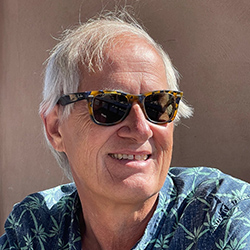
February 2nd @ 7:00 pm ET
Watch it on YouTube
About the Speaker:
Watch it on YouTube
A Tour of the April 8, 2024 Total Solar Eclipse
Michael ZeilerJoin eclipse-chasing geographer and cartographer Michael Zeiler on a multimedia tour of the path of totality on April 8, 2024. This includes an animated flyover as simulated from the view of a spacecraft 100 miles high and detailed maps of the eclipse path. Special attention will be given to the midwest and Texas, an eclipse destination for many amateur astronomers. One obsession of all eclipse chasers is to maximize the odds of clear skies during totality. Mr. Zeiler will discuss how to weigh many factors such as proximity to the longest duration, ease of mobility on the local road network, climatological records for April, and how weather systems respond to local topography. He'll also explore the wide variety of eclipse viewing venues, everything from a stadium to a mountain peak, major cities or national parks, and museums or zoos. Mr. Zeiler will also present his research on how many people will travel to totality's path on Eclipse Day and discuss the economic impacts for regions in the U.S. He'll also preview what comes after the 2024 eclipse, both in North America and around the world.
About the Speaker:
Michael Zeiler is a geographer who recently retired from the leading provider of geographic information systems (GIS) software. He has witnessed total solar eclipses since 1991. In 2009, while writing his book, Modeling Our World, he realized how advanced GIS technology could be applied to publish new eclipse maps of high precision and good cartographic quality. After creating his first eclipse map for the total solar eclipse of July 22, 2009, he launched eclipse-maps.com in 2010 to showcase new and historic eclipse maps. Recognizing the widespread public interest in the August 21, 2017 total solar eclipse, he launched GreatAmericanEclipse.com on August 21, 2014. He is a member of the International Astronomical Union Working Group on Solar Eclipses and is honored to have an asteroid (53253 Zeiler) named after him.
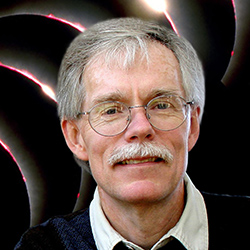
March 1st @ 7:00 pm ET
Watch it on YouTube
What is it like to experience a total eclipse of the Sun? We will hear eyewitness accounts of totality from great astronomers of the past as well as recent
experiences of the speaker.
About the Speaker:
Watch it on YouTube
Experiencing Totality - The Great Eclipse of 2024
“Mr. Eclipse” Fred EspenakWhat is it like to experience a total eclipse of the Sun? We will hear eyewitness accounts of totality from great astronomers of the past as well as recent
experiences of the speaker.
On April 8, 2024, a total eclipse of the Sun will be visible from North America for the first time since 2017. The track of the Moon's shadow will cross Mexico, the central and
northeastern United States, and eastern Canada. Compared to 2017, the path of totality is 70% wider, and the duration is nearly twice as long (4.5 minutes). With portions of 15
states and 6 Canadian provinces in the path, the 2024 eclipse promises to be the most widely viewed eclipse of all time.
A preview of this highly anticipated event will feature
maps and weather prospects along the eclipse path based on the speaker’s recent books on the subject.
About the Speaker:
Fred Espenak is a retired NASA astrophysicist from NASA's Goddard Space Flight Center, where he worked with infrared spectrometers to probe the atmospheres of the planets. He is also known as "Mr. Eclipse" because of his work predicting and observing solar eclipses. He has written over a dozen books on eclipses, including his most recent, Eclipse Bulletin: Total Solar Eclipse of 2024. Espenak also runs three eclipse websites: EclipseWise, MrEclipse, and AstroPixels. Over the past 53 years, he has witnessed over 30 total eclipses of the Sun. In 2003, the International Astronomical Union honored Dr. Espenak by naming asteroid 14120 after him. He now lives in Portal, Arizona.
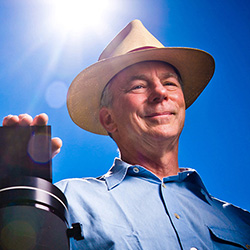
March 15th @ 8:00 pm ET
Watch it on YouTube
About the Speaker:
Watch it on YouTube
Solar To The Max
Alan FriedmanThe sun is a unique and rewarding subject for the astrophotographer. It can be studied in different wavelengths, imaged from almost any location and can be presented in different ways to portray our star in a unique and compelling light. The sun is now well along on its journey to maximum activity (predicted 2023-2026) with eclipses visible from North America in 2023 and 2024. Now is the perfect time to hone our solar imaging skills for the opportunities to come. This talk will discuss technical and creative considerations in solar imaging with the goal of exercising those solar “muscles” and preparing for the increase in activity that lies just around the corner.
About the Speaker:
Alan Friedman is an artist and astrophotographer who records our neighborhood star from his backyard in Buffalo, NY. He is a four time recipient of the Astronomy Photographer of the Year awards hosted by the Royal Observatory and his solar portraits have been featured in the exhibition of the same name at the National Maritime Museum in Greenwich, England. His photography has been the subject of books, lectures, a TEDx talk and featured on NASA’s popular website Astronomy Picture of the Day (APOD). Alan’s work has been exhibited nationally, including a collaborative show Fire and Ice and a solo show Into the Light which was mounted at the Palm Court Gallery, Orange County, CA in conjunction with the Solar Decathlon. By day, Alan is president and CEO of Great Arrow Graphics, a greeting card publisher. He is a research associate at the Buffalo Museum of Science and a member of the Buffalo Astronomical Association.
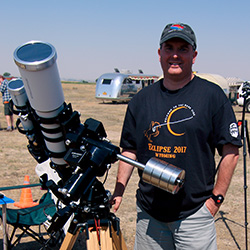
Community Eclipse Presentations
Richard BellThe second component of the "Eclipse Series" is our community outreach program. As the public slowly becomes aware of the 2024 eclipse, there will be a
need for knowledgeable people who can explain the eclipse and prepare families and the public to safely view the event. To that end, we are offering free presentations on the 2024
eclipse at libraries and schools throughout southwest Michigan. Each presentation will cover the basics of solar eclipses, information on the April 8th eclipse, and ways to view an
eclipse safely.
About the Speaker:
Richard got bit by the astronomy bug at a very early age. He enjoyed looking at pictures of the planets as early as age 4 and got his first telescope at age 7. Richard has had just about every astronomy-related job one can have in Kalamazoo. He worked at the local planetarium for nine years and sold telescopes at a local hobby shop for six years. After receiving degrees in physics and mathematics from Western Michigan University, he taught introductory astronomy courses at most of the surrounding colleges and universities for over fifteen years. Richard is also an avid observer and astrophotographer. He is one of only three lifetime members and the current president of the Kalamazoo Astronomical Society, serving in this position longer than anyone else in its history.
| Date | Time | Location | County |
|---|---|---|---|
| November 7, 2023 | 6:00 PM | Three Rivers Public Library | St. Joseph |
| November 9, 2023 | 5:00 PM | Sherwood Branch Library | Branch |
| November 14, 2023 | 6:30 PM | Oshtemo Branch Library | Kalamazoo |
| February 7, 2024 | 8:50 AM | Galesburg-Augusta Middle School | Kalamazoo |
| February 12, 2024 | 6:00 PM | Allegan District Library | Allegan |
| February 17, 2024 | 2:00 PM | Buchanan District Library | Berrien |
| February 21, 2024 | 6:30 PM | Parchment Community Library | Kalamazoo |
| February 27, 2024 | 7:00 PM | Portage District Library | Kalamazoo |
| February 29, 2024 | 8:00 AM | Tekonsha Community Schools | Calhoun |
| February 29, 2024 | 9:30 AM | Tekonsha Community Schools | Calhoun |
| March 2, 2024 | 11:30 AM | Eastwood Branch Library | Kalamazoo |
| March 2, 2024 | 2:00 PM | Hastings Public Library | Barry |
| March 4, 2024 | 3:30 PM | Lincoln Township Public Library | Berrien |
| March 5, 2024 | 6:30 PM | Krause Memorial Branch Library | Kent |
| March 6, 2024 | 6:00 PM | Vicksburg District Library | Kalamazoo |
| March 7, 2024 | 6:00 PM | Charlotte Community Library | Eaton |
| March 8, 2024 | 6:00 PM | Delton District Library | Barry |
| March 11, 2024 | 6:30 PM | Cascade Township Branch Library | Kent |
| March 12, 2024 | 6:30 PM | Plainfield Township Branch Library | Kent |
| March 13, 2024 | 6:30 PM | Grandville Branch Library | Kent |
| March 14, 2024 | 6:00 PM | Paw Paw District Library | Van Buren |
| March 16, 2024 | 1:00 PM | Bridgman Public Library | Berrien |
| March 18, 2024 | 3:30 PM | Quincy Branch Library | Branch |
| March 18, 2024 | 7:00 PM | Boy Scouts of America | Kalamazoo |
| March 19, 2024 | 6:00 PM | Edwardsburg Branch Library | Cass |
| March 20, 2024 | 6:00 PM | Van Buren District Library | Van Buren |
| March 21, 2024 | 6:30 PM | Spencer Township Branch Library | Kent |
| March 22, 2024 | 4:00 PM | New Buffalo Township Library | Berrien |
| March 23, 2024 | 2:00 PM | Ransom District Library | Allegan |
| March 25, 2024 | 5:30 PM | Schoolcraft Community Library | Kalamazoo |
| March 26, 2024 | 5:30 PM | Cass District Library | Cass |
| March 27, 2024 | 6:00 PM | Comstock Township Library | Kalamazoo |
| March 28, 2024 | 6:30 PM | Amy Van Andel Library | Kent |